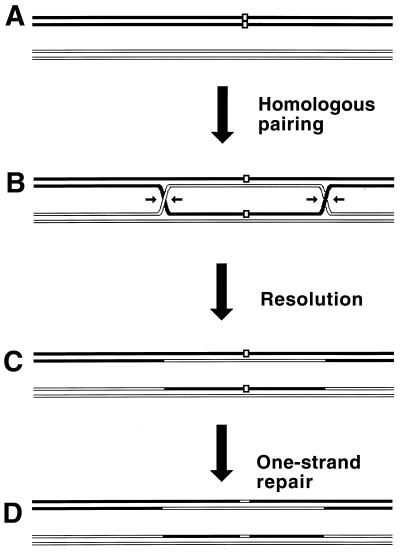FIG. 1.
The idea of two-strand repair. (A) A DNA molecule with a two-strand lesion (small open rectangles in the solid duplex) is shown side-by-side with an intact homolog (open duplex). (B) The two sequences have exchanged strands in a homologous region, converting the two-strand lesion into a pair of one-strand lesions. (C) Junction resolution (the strands to cut are shown in panel B) separates the chromosomes from each other. (D) Excision repair removes the one-strand lesions, completing the overall repair reaction. Note that if black and white “parental” DNAs are not identical, the resulting chromosomes may become “recombinant.”

